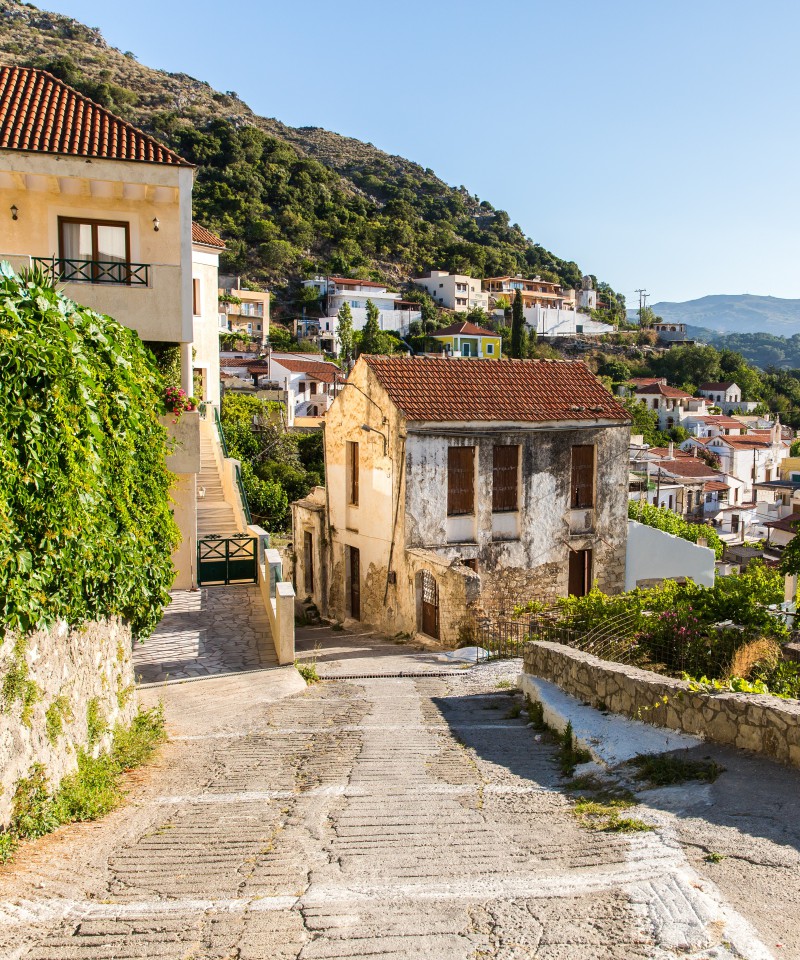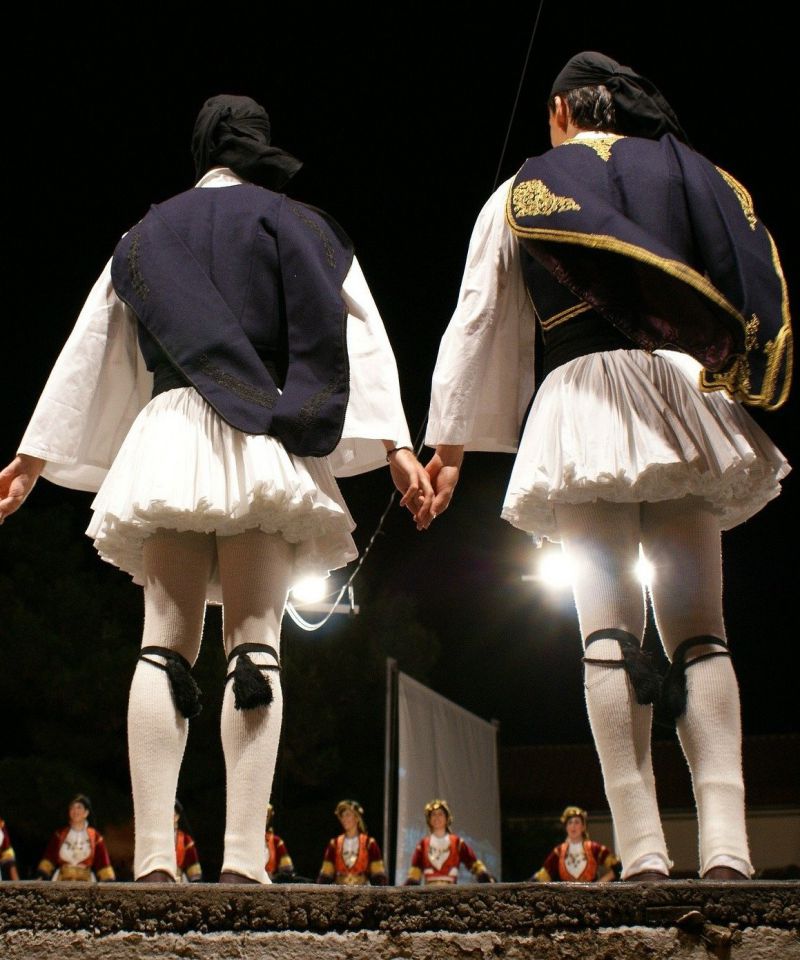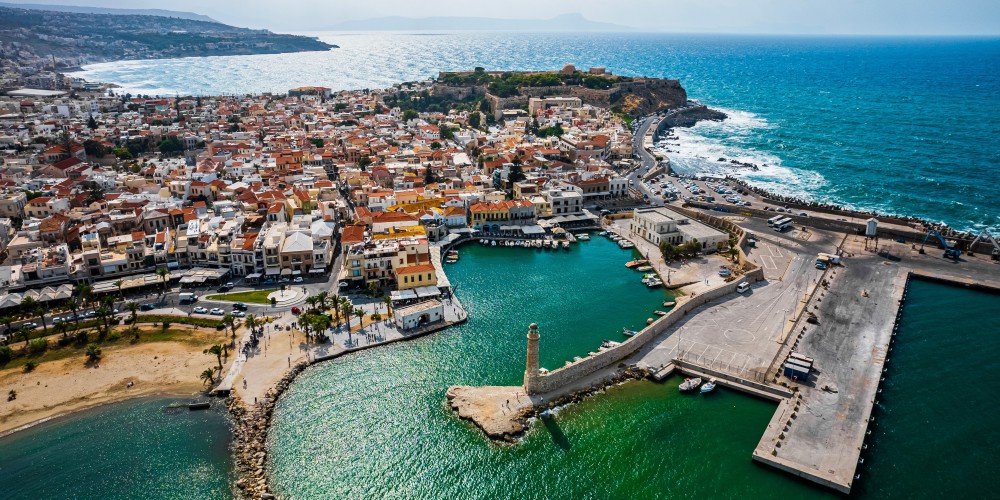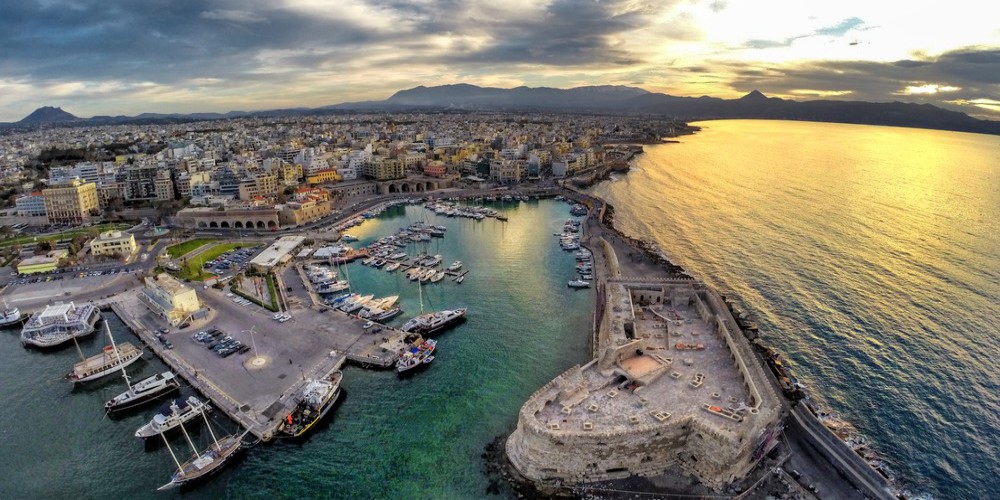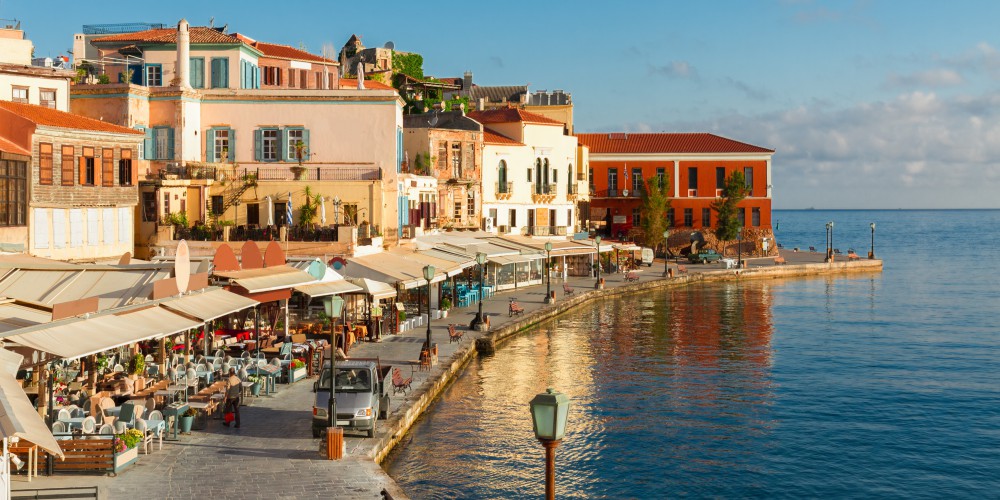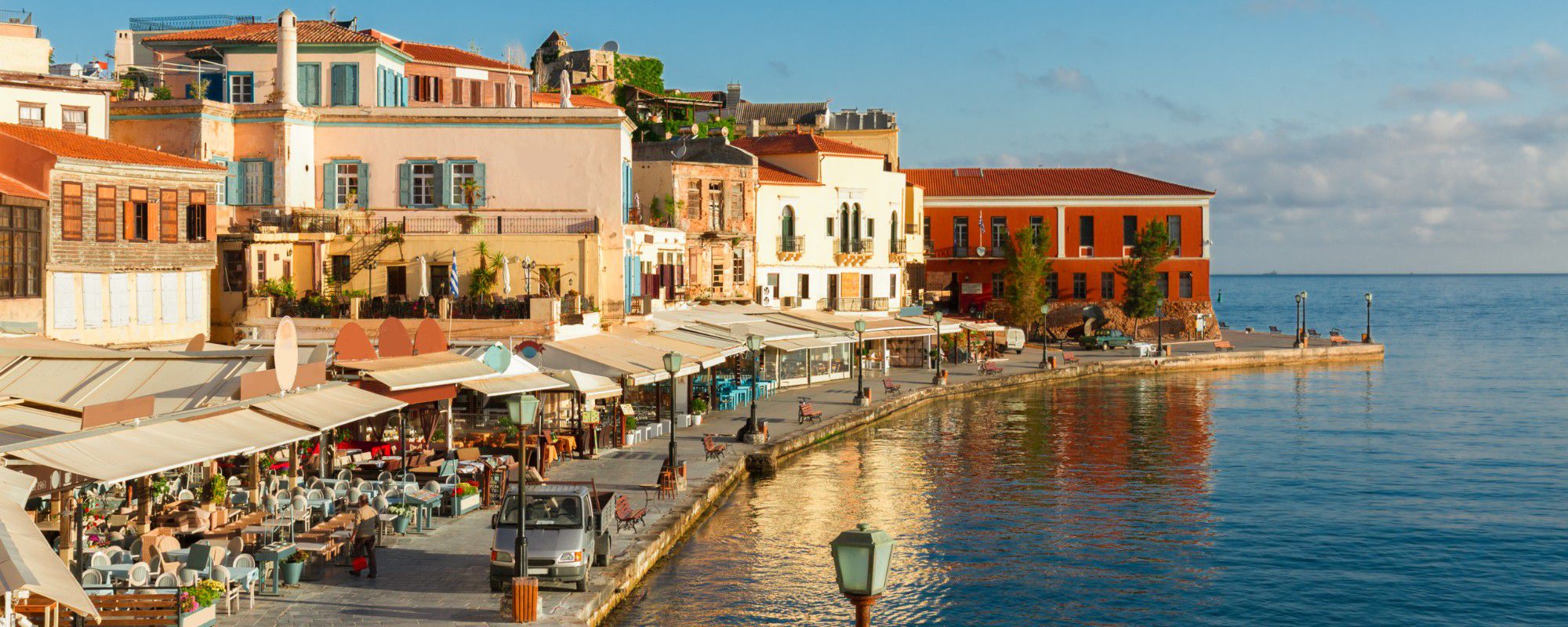
Top Things to Do in Chania, Crete [2026]
Key Takeaways
- Experience the local food culture by trying Greek baked goods and pastries like 'spanakopita' and 'kalitsounia' in a regional bakery.
- Explore the charming old Venetian harbor of Chania, which is filled with cafes, bakeries, restaurants, and bars.
- Swin in the incredible Chania beaches, which are some of the best on the island.
- Learn about Chania's history, and architecture, and enjoy the breathtaking view of the harbor and the White Mountains.
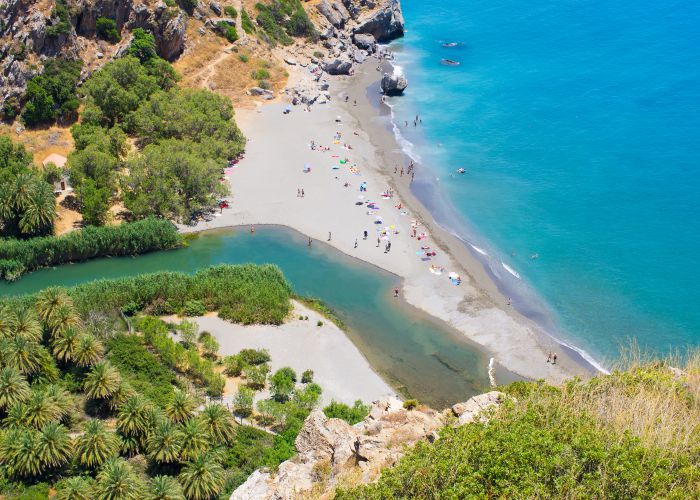 Preveli Palm Beach - credits: CCat82/Shutterstock.com
Preveli Palm Beach - credits: CCat82/Shutterstock.com
When someone hears the word 'Chania,' endless turquoise waters and a touch of Venetian finesse come to mind.
Chania, located on the northwest coast of the island of Crete, is well known for its picturesque pedestrian streets and serves as a prime example of how years of history can shape a city’s unique vibe.
Whether you like dancing all night long with your friends or you prefer relaxing at the beach with the kids until the sun sets, this is the place for you, and you'll find it in most of our Greece vacation packages!
1. Eat a Traditional Greek Breakfast in a Local Bakery
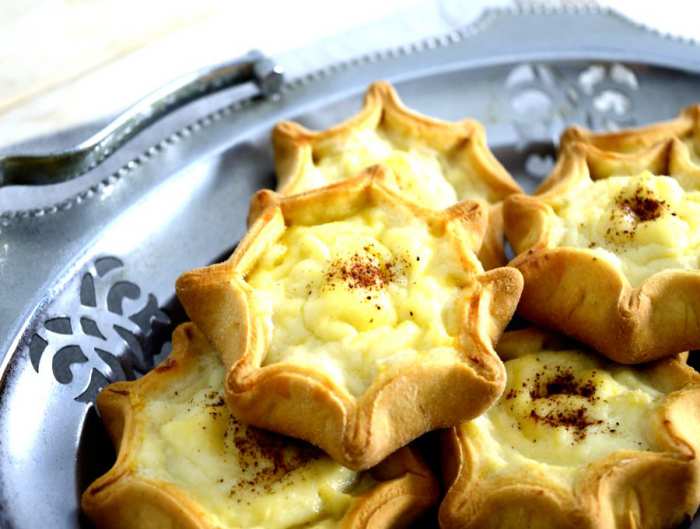
In Greece, we take the saying ‘eat breakfast like a king’ literally; a fact not quite surprising if you consider how seriously we take our food.
Cretan tradition follows and surpasses the Greek food obsession.
Therefore, have an early start to your day as soon as you arrive from Athens to Crete with a boost of energy like a true local.
Head to a regional bakery to try a selection of Greek baked goods and pastries, such as ‘spanakopita’ -spinach and cheese pie in ‘phyllo’ pastry- or the traditional treat of ‘kalitsounia’- small sweet or savory pies with different filling variations- preferably stuffed with ‘mizithra’ cheese and topped with honey.
'Phyllo Bakery & Mediterranean Delicacies’ is one of the best bakeries in Chania, being an optimum spot for your Cretan breakfast.
Don’t deprive yourself of the traditional Cretan dishes; your diet can wait for you to return home!
2. Stroll the Picture-perfect Old Venetian Harbor and the Neoria (Dockyards)
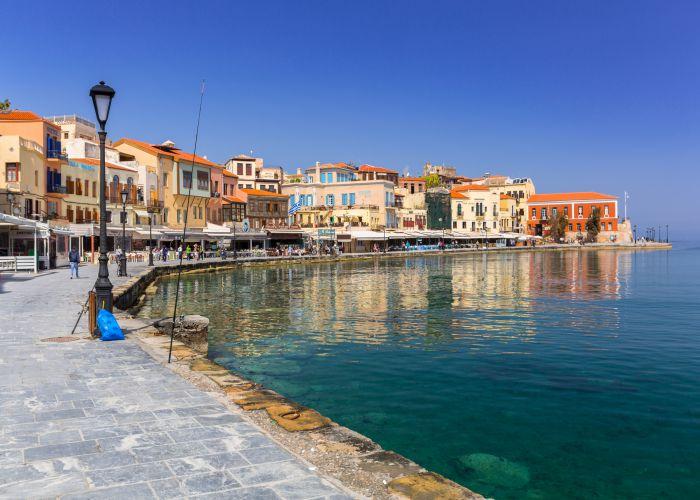
When thinking about the old Chania town, the picture of the quay right by the sea, filled with cozy cafes, delicious bakeries, traditional restaurants, and popping bars, is the first thing that comes to mind.
Arguably the most active part of the town, the old Venetian harbor of Chania stands out from the most charming seaside regions.
This is due to its extraordinary history, apparent in its many monuments that date back to the times when the Venetians, Egyptians, and Ottoman Turks invaded Chania.
The harbor was built by the Venetians between 1320 and 1356 and became a critical base for the Venetian fleet.
It was also one of the most valuable economic centers of the Eastern Mediterranean Sea.
In the 16th century, the harbor became front and central to the reinforcement of Chania Town against the Turkish threat.
Its decline came much later, around the early 20th century, due to the inability of larger boats to reach the pier, resulting in the port of Suda taking the reins of commercial traffic.
While walking along the harbor, you can’t help but come across Neoria, the stone, long narrow buildings built for repairing and building Venetian ships.
Following the waterfront constructed in the 20th century, they are solely a historical attraction, losing their access to the sea.
In the past, they have been used as a Christian school, a theater, a public hospital, and a town hall.
Today, however, they have become a vibrant, cosmopolitan beauty spot of the city with bars, taverns, and Cafés opening up in Neoria Square.
3. Explore the Streets of Chania
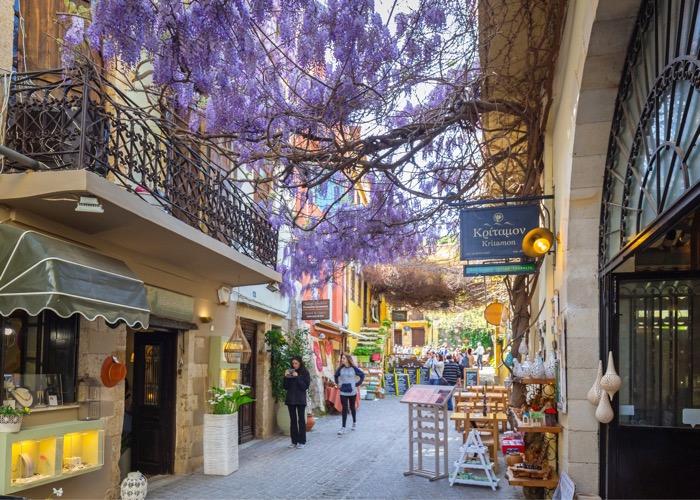
Every single town in Crete has its own special story. When visiting Chania, which is located in north-western Crete, the wide and narrow paved streets are where tradition and geography meet.
The Old Town is full of examples of how tradition can still survive; head to Skridlof Street and watch manufacturers making 'stivania,' the famous classic Cretan boots.
Nearby, you will find Karaoli Dimitriou Street, where authentic Cretan knives are made!
However, the city descends to the port. During the 14th century, Venetians built this magnificent port which is surrounded by the Old Town of Chania.
There, you will also see the Venetian Lighthouse, overlooking the Mediterranean.
Strolling around this alluring city and visiting its cute souvenir shops can take a while, so it is likely that you will hear your stomach growling eventually.
Thus, you should combine your walk with some food stops to refuel before continuing your route!
4. Admire the Lighthouse of Chania’s Old Port
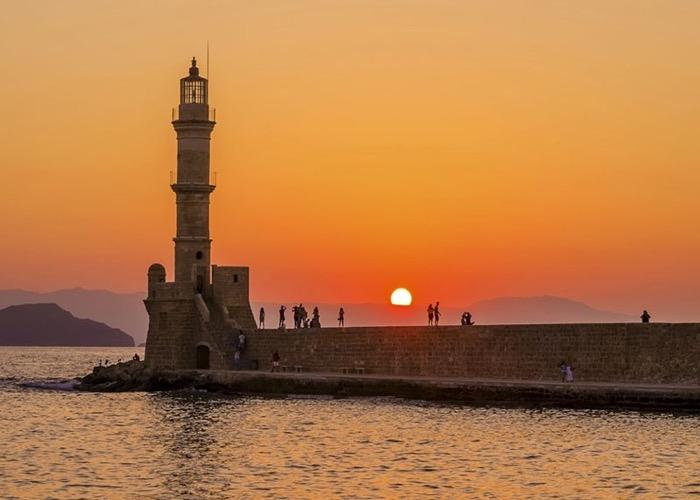
While you are in the old port of Chania, you can’t miss the imposing figure of the lighthouse on its edge, one of the oldest lighthouses found in the world today.
The Egyptian lighthouse was built by the Venetians around 1595 - 1601 but later took its final form by the Egyptians around 1839.
The lighthouse was restored in 2006 when it was given the tower-like shape of the Venetian period it still holds today.
The architecture of the tower is impressive, with it being divided into three very distinctive parts: the octagonal base, the main part with its sixteen sides, and the circular top.
Built on a stone base and reaching an impressive 21m in height, the lighthouse is a true feast for the eyes, especially at nighttime, when the whole structure gets lit up.
Walk by the sea and continue onto the pier that will lead you close to the lighthouse, opposite the fortress of 'Firkas,' where you will have the opportunity to enjoy a breathtaking view of the harbor, the old town, and the White Mountains.
Unfortunately, the lighthouse is not functional today, and entrance to the tower is prohibited, however, it still is a sight you don’t want to miss!
5. Taste the Best of Cretan Cuisine
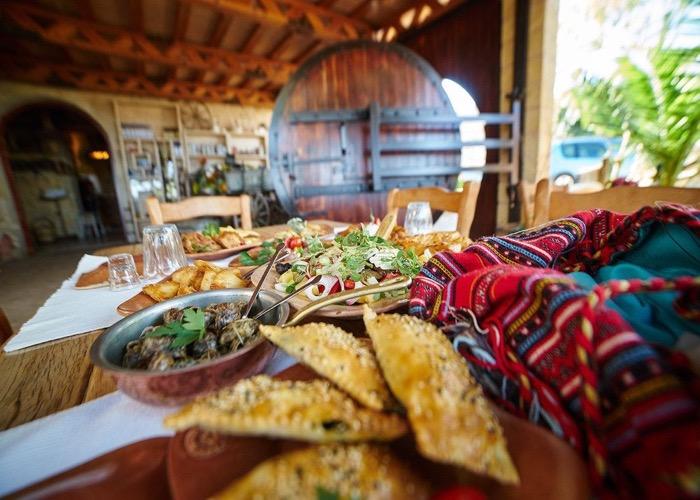
Speaking of food stops, you have a great opportunity to explore the one-of-a-kind gastronomy, Cretan cuisine.
Chania is the best place to eat authentic Greek food but be aware of touristy eateries.
Search restaurants and taverns that give you a “homey” feeling, located in various spots in the city.
Beautiful gardens surrounded by ivies and bougainvilleas serve fresh calamari, gopa, and octopus.
Of course, Cretans like to accompany food with local wine, as their love of winemaking is very well known.
Most of the wineries are hidden in small villages near the city, and we can say with confidence that they are totally worth visiting.
Take some time to taste different types of wine while hospitable winemakers narrate the wine production process.
Save some room in your suitcase as we guarantee that you won’t leave empty-handed. There are many excellent choices that will satisfy your tummy, as well as many hidden treasures in and around the city.
So, before starting your gastronomic journey, make sure to get the most special ones so you can eat and drink like a local.
Now you understand why joining our Chania cooking class can be one of the best things to do in Chania!
6. Take the Trail Leading to Balos
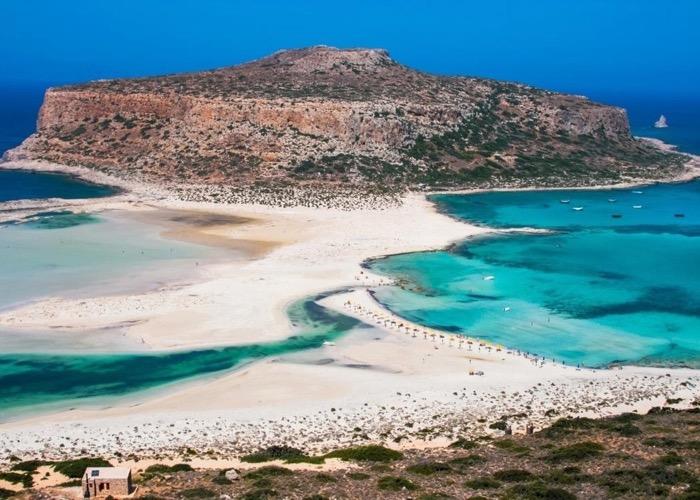
Apart from all the -irresistible- eating and drinking, you also need something to help you remain active. How does hiking sound?
We have the most spectacular spot for you to hike; the Balos. This masterpiece of nature is 18 kilometers long.
Needless to say, you would need to dedicate a whole day there, but you would definitely not regret it. Leave your vehicle in the car park and off you go!
If you feel a bit less adventurous, you can head up to one of the mesmerizing beaches of the city; Agia Marina, Stalos, and Platanias.
Last but not least, the Nautical Museum of Crete is located in Chania, and its valuable collection includes war relics, ship models, and lots of historical photographs.
Maritime and history enthusiasts would really appreciate this museum as they could learn about topics like the liberation of Greece and the battle of Crete. It also contains exhibits from the Second World War, making this educational visit a memorable and touching experience.
Like every other city in Crete, Chania has its own exceptional beauty that distinguishes it from Heraklion, Rethymno, and Agios Nikolas. A place that combines tradition, vibrant nightlife, serenity, a long history, and amazing landscapes would be any traveler’s paradise.
All that being said, the location is ideal for day trips around Crete, so you can also plan to go to multiple destinations while visiting. You won’t stand to leave this city!
7. Visit some of Chania’s Museums
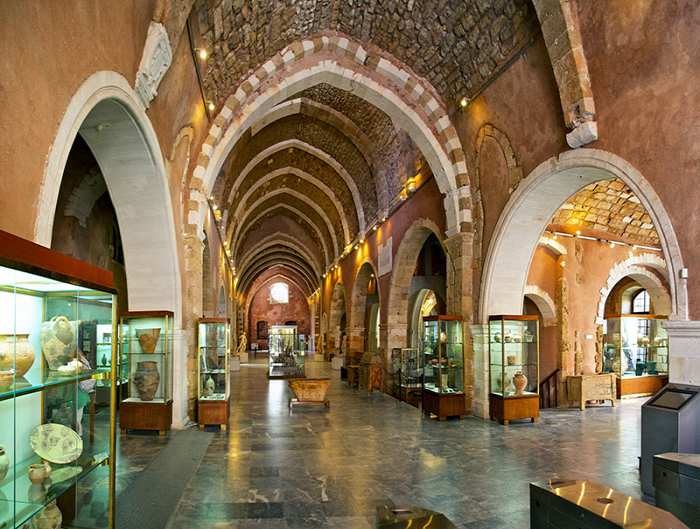
It is time for you to explore the cultural side of Chania.
You will have the opportunity to engage in some sightseeing, choosing between one of the many fascinating museums the region has to offer.
Our top picks would be the Folklore Museum of Chania, the Maritime Museum, and the Archaeological Museum.
The former, located next to Chania’s Catholic church on Halidon Street, offers an accumulation of folklore and traditional exhibits, giving the visitors an insight into the everyday life of Cretans in the 18th and 19th centuries.
The latter, also located on the same street, is where a medieval Franciscan monastery, one of the most important monuments of the Venetian period in Crete, used to lie.
It became a museum in 1963 and now exhibits antiquities from the Neolithic to the Roman periods, demonstrating the historical and cultural evolution of Chania throughout the years.
8. Explore Chania’s Municipal Market
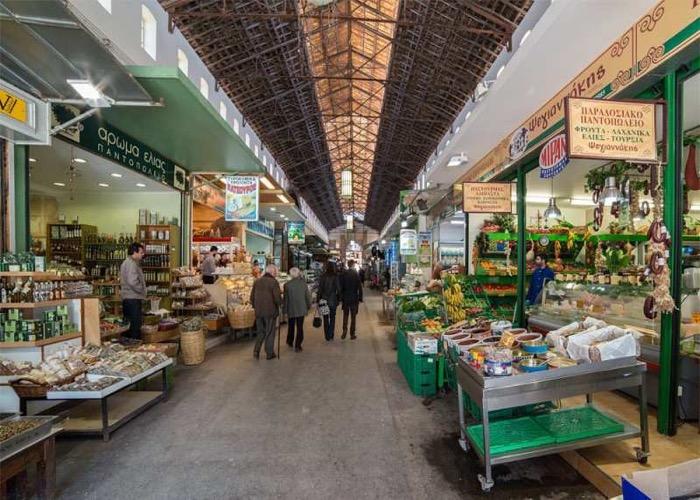
A trip to Chania wouldn’t be complete without you getting to familiarize yourselves with traditional Cretan products. The Municipal Market of Chania, also known as ‘Agora’ in Greek, offers just that.
Built at the center of the city between 1909 and 1913, the year Crete was united with the rest of Greece, the market was designed to resemble the covered market of Marseilles.
At the same time, it also bears a resemblance to an ancient Greek marketplace.
Its cruciform shape covers 4000 square meters in a surrounding area of 17.200 square meters, constructed to fit an extensive amount of shops within its premises.
The Municipal Market of Chania remains active, being the place where one can find all kinds of local goods, from vegetables, fish, meat, herbs, and spices, to Cretan delicacies such as cheeses, olives, raki, and other Greek products.
Specifically, the eastern part of the market holds butcher shops, the western end holds fish shops, and on the north and south ends, one can find fruit and vegetables.
During the high season months of summer, some shops in the market also sell tourist souvenirs.
Additionally, in the market, a few cozy cafés offering local food can be found.
Highlighting its financial and cultural importance, the official opening ceremony was performed by the Prime Minister of Greece, the world-famous Eleftherios Venizelos.
During the German occupation, the market was used by German soldiers for the needs of the army. In 1980, the Municipal Market of Chania was declared a protected monument by the Ministry of Culture.
You can try Mon.Es, an amazing restaurant that offers delightful seafood, specializes in local flavors, and is the best choice for someone looking to taste the essence of Crete.
If seafood is not for you, you can opt for Oinoa, one of the best places to try the Mediterranean diet -the element most often held responsible for Cretans’ long lifespan.
Wash your food down with ‘raki’, the traditional Cretan spirit that is one of the most popular Greek spirits, and we promise you, you’ll fall in love with Crete, just like we have!
9. Visit the Firkas Fortress
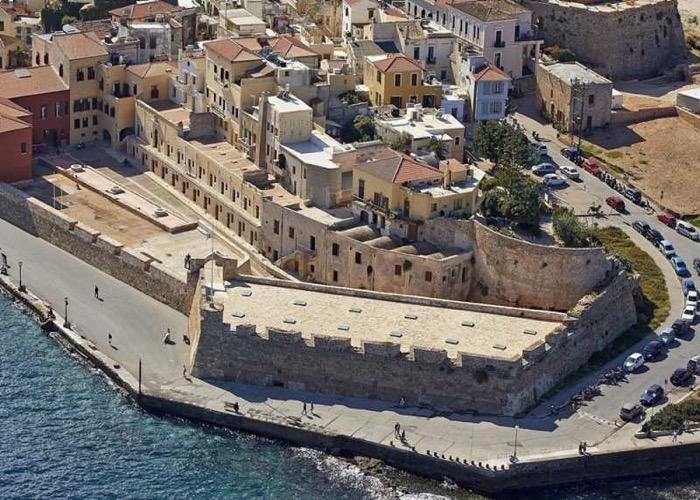
Built in 1629 as a shield for the harbor by the Venetians, the 'Firkas' fortress now hosts the Maritime Museum of Crete.
There, you can find a wide variety of nautical objects and findings, including models of ships, nautical tools, paintings, and authentic photographs, among others, dating from the Bronze Age up to today.
The fortress of ‘Firka,’ which in Turkish translates to ‘a military division,’ was used as the headquarters of the Turkish army in the region of Chania.
The cultural significance of the fortress is highlighted by the fact that the Union of Crete with Greece in 1913 was celebrated within its walls.
That’s when the Turkish flag was proudly replaced by the Greek flag, where it has stood ever since.
Apart from its historical and cultural value, Firkas Fortress offers the perfect spot for people to enjoy the magnificent, complete view of the Venetian harbor of Chania, delivering the Instagram-ready visitor' photos bloggers would lust after.
10. Appreciate Muslim Architecture at Giali Tzamisi
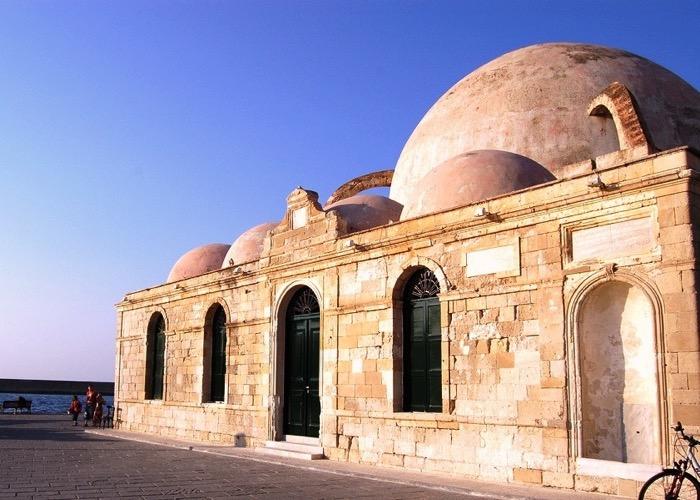
The Giali Tzamisi, which can be translated from Turkish to ‘The Seaside Mosque,’ is the oldest Muslim building in Crete and the very first mosque built by the Ottomans in Crete.
It was built in 1645 in honor of Kioutsouk Hassan Pasha, the first Turkish military commander of Chania.
The mosque has a cubic structure covered by a large hemispherical dome that supports four ornate stone arches. On its west and north sides, it is surrounded by a vaulted roof of six small domes.
After the fall of the Ottoman Empire and the evacuation of the Turks from the Greek island in 1923, Giali Tzamisi was used off and on as a warehouse, archaeological museum, folk art museum, as well as the headquarters of the Greek Tourism Organization.
Today it plays host to various cultural events and exhibitions. This brilliant example of Islamic art of the Renaissance was bombarded by the Nazis during World War II, when a large section of its southern side was ruined.
According to the findings of Chania’s archaeological service during maintenance, Giali Tzamisi was founded on the archaeological site of a small Venetian temple that was destroyed during the Turkish invasion of Chania.
The historical building reflects the region’s rich heritage while giving the opportunity for visitors to appreciate Muslim architecture from up close.
11. Discover the History of Chania’s Grand Arsenal
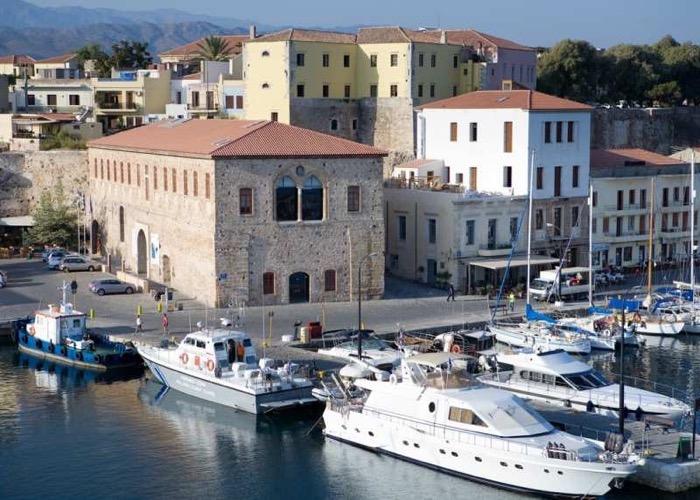
During a walk along the Old Port of Chania, at the very end of the dockyards on the western side, lies the Grand Arsenal, standing out against the backdrop because of its beauty and dynamic energy.
Built in the 1600s but becoming functional in 1872, following the addition of a second floor, the Grand Arsenal has had many uses throughout the years, being home to the Christian School, theatrical performances, municipal hospital, and the City Hall of Chania, up until 1928.
Similar to many Greek and Cretan monuments, such as the aforementioned Giali Tzamissi, the Grand Arsenal was bombed by the Germans during the Second World War, enduring severe destruction that deemed it useless.
Thankfully, by the end of the 20th century, the Center of Architecture of the Mediterranean in Chania decided to restore and reconstruct the Grand Arsenal, an initiative that was eventually completed in 2002.
Today, the once-rugged ruin has become an impressive venue for events and exhibitions.
It functions as the Center for Architecture in the Mediterranean, hosting important Greek and international events on its premises, with a special emphasis on architecture.
The Best Chania Beaches
Chania is renowned for its stunning coastline and breathtaking beaches, which are some of the top beaches in Crete.
As a result, one of the top things to do in Chania is swim on the nearby beaches or at least the closest beach to your hotel.
The area boasts a diverse array of sandy retreats, ranging from secluded coves to expansive shores with crystal-clear waters.
Here's a look at some of the best beaches in Chania that offer a slice of paradise for every beach lover.
Elafonissi Beach
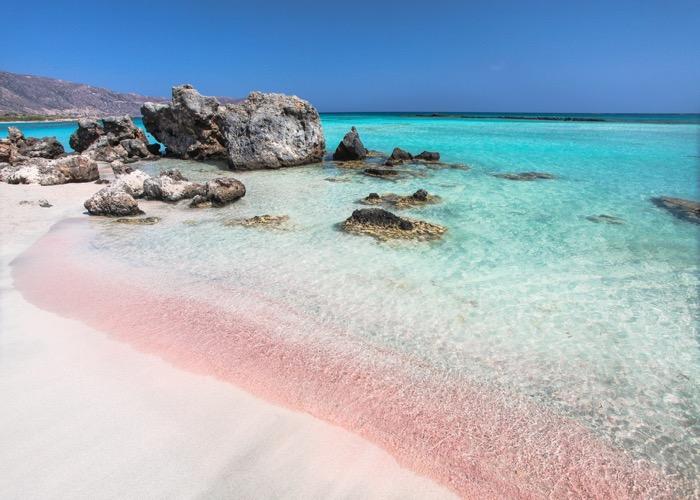
Elafonissi Beach is a piece of heaven on earth, known for its shimmering pink sands and shallow turquoise waters.
This beach is not just a treat for the eyes but also offers a unique experience due to the presence of a protected nature reserve on the island.
The shallow waters make it an ideal spot for families with children, while the natural beauty is a draw for nature enthusiasts and photographers alike.
Its beauty and ecological significance have made it one of the most famous beaches in Crete.
Balos Beach
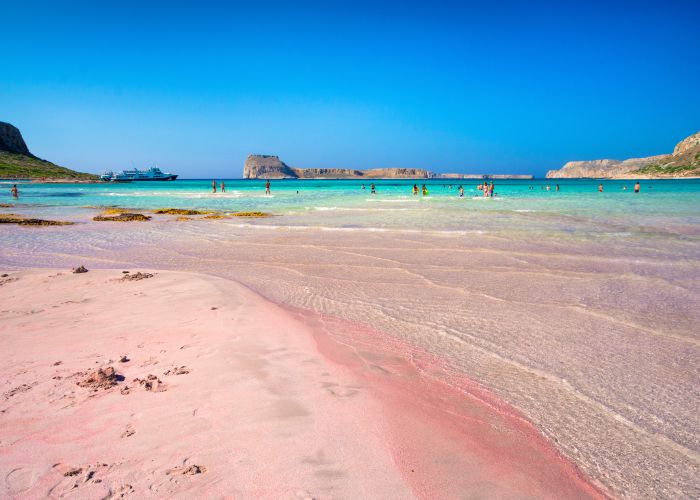 Balos Lagoon - credits: Georgios Tsichlis/Shutterstock.com
Balos Lagoon - credits: Georgios Tsichlis/Shutterstock.com
Balos Beach is another gem that graces the northwest corner of Crete.
Famous for its wild natural beauty, Balos is a lagoon with exotic white and pink sand and an array of blue and turquoise waters.
The beach is accessible by a captivating boat ride or a rewarding hike, both offering stunning views of the lagoon and the Gramvousa islet.
Balos is a must-visit for those looking to experience the raw beauty of Chania's coastlines.
Falassarna Beach
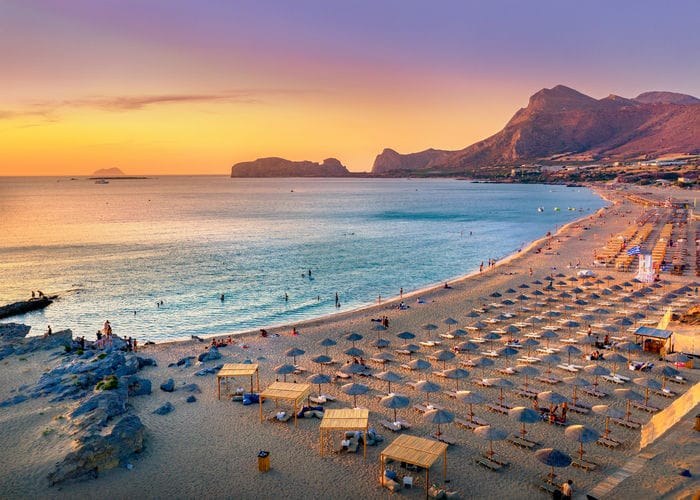 Falasarna Beach - credits: Georgios Tsichlis/Shutterstock.com
Falasarna Beach - credits: Georgios Tsichlis/Shutterstock.com
Falassarna Beach is located on the west coast of Crete and is known for its strikingly clear waters and golden sandy beaches.
This expansive beach is popular among both sunbathers and water sports enthusiasts, providing ample space for everyone to enjoy their day under the sun.
The beach is also famous for its spectacular sunsets, making it a perfect spot for a serene evening by the sea.
Agii Apostoli Beach
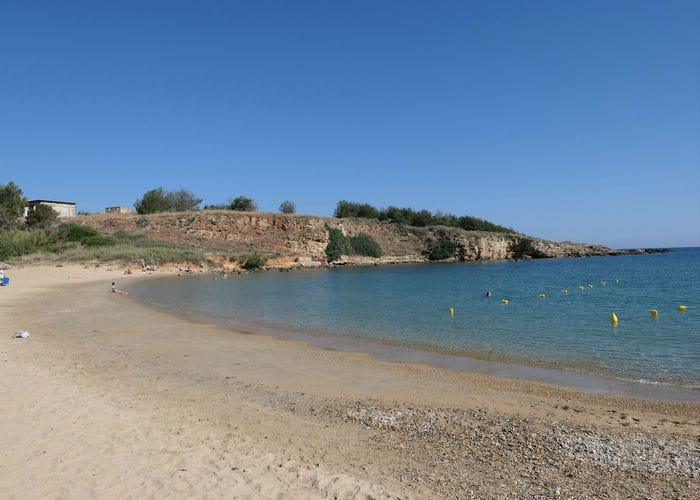 Agii Apostoli Beach - credits: rcadsoftware/Shutterstock.com
Agii Apostoli Beach - credits: rcadsoftware/Shutterstock.com
Agii Apostoli Beach is a charming beach located in a bustling area near Chania Town.
It is well-loved by locals and tourists for its golden sand, clear waters, and the lush green park that surrounds it.
The beach is well-organized, offering facilities like sunbeds, umbrellas, and a variety of water sports.
Its proximity to the town makes it a convenient choice for a quick dip or a full day of beach fun.
Nea Chora Beach
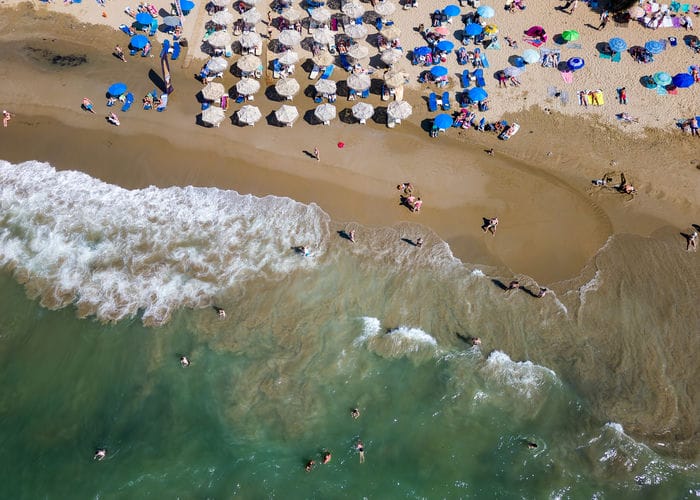 Nea Chora Beach - credits: Richard Whitcombe/Shutterstock.com
Nea Chora Beach - credits: Richard Whitcombe/Shutterstock.com
Nea Chora Beach is a sandy beach with calm waters, located close to Chania's city center.
It is a popular spot for families due to its gentle waves and the presence of numerous amenities, including restaurants, cafes, and playgrounds.
The beach also features a small fishing port, adding to the scenic and peaceful atmosphere of the area.
Each of these beaches in Chania offers a unique experience, from the exotic lagoons to the family-friendly shores. Whether you're seeking adventure, relaxation, or simply a beautiful spot to soak up the sun, Chania's beaches are sure to provide an unforgettable seaside escape.
Final Thoughts
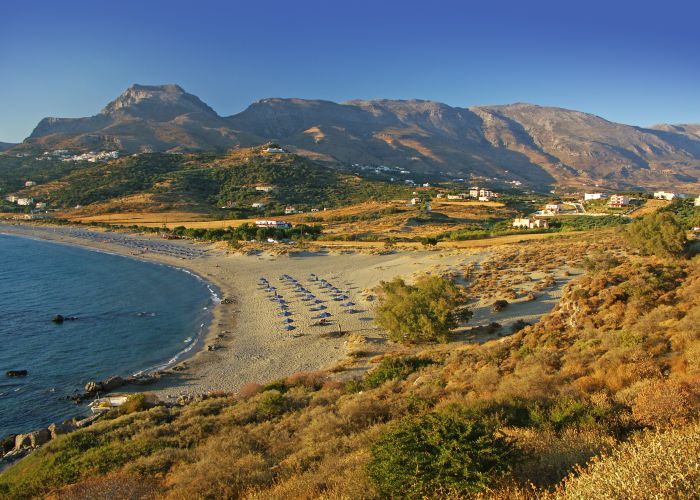 Plakias Village, Crete - credits: Zbynek Jirousek/Shutterstock.com
Plakias Village, Crete - credits: Zbynek Jirousek/Shutterstock.com
As the sun sets over the captivating city, Chania reveals its undeniable allure, inviting visitors to create lasting memories and embrace the unique atmosphere that sets it apart from other cities in Crete.
So, whether you're seeking a historical adventure, a culinary journey, or simply a relaxing beach getaway, Chania offers it all.
Its beauty, culture, and warm hospitality make it a true paradise for travelers. Come and explore the wonders of Chania, and let this city weave its magic around you.
If you want to discover more about Chania, Crete, or the whole of Greece, all you have to do is book one of our Greece tours and let the experts lead the way on a walking tour of a lifetime!
Also, check out how to arrive from Santorini to Crete to consider an island-hopping adventure that will become a lifetime highlight!






